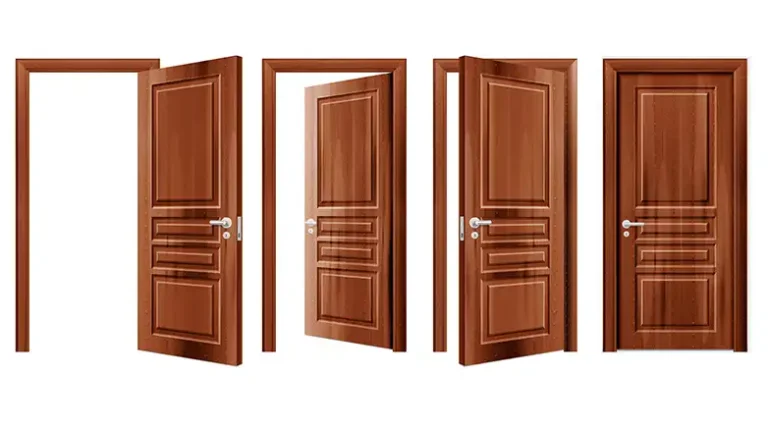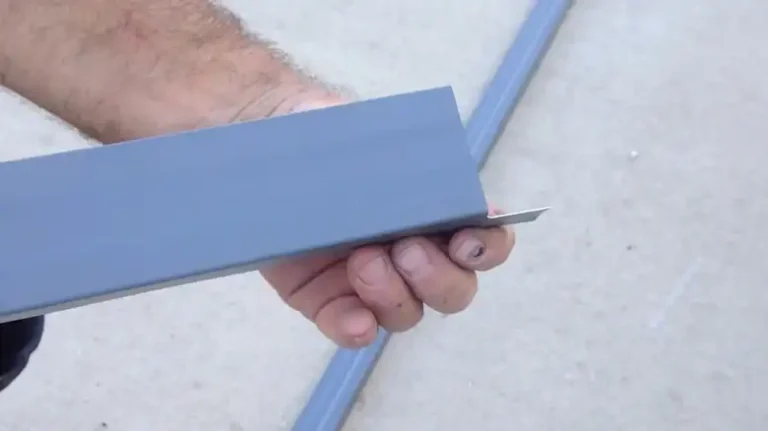[Explained] Do You Need a Steel Beam for Sliding Doors?
There are many reasons to opt for a sliding door rather than a more traditional hinged door. Simply put, it can provide you the opportunity to let more air in, especially in warmer months. Also, it can add a touch of elegance to your home as well.
However, installing a sliding door has its own set of challenges, one of them being the need for a steel beam. In this article, we will discuss whether you really need a steel beam for your sliding doors, when you might need one, and when you might not. So, read on.

So, Do you Really Need a Steel Beam for your Sliding Doors?
Before we start, let’s clarify the role of a steel beam in sliding door installations. Steel beams are used to provide structural support when the installation of sliding doors places additional stress on the surrounding framework. This is typically necessary in scenarios where the doors are oversized or where they are being placed in load-bearing walls.
When Do You Need a Steel Beam?
Now, let’s address the big question: When is a steel beam a necessity for your sliding door installation?
Door Size and Weight
The size and weight of your sliding doors are among the most critical factors to consider. Larger and heavier doors exert more force on the surrounding structure. If your doors are on the larger side, especially those massive glass sliders that are really popular these days, a steel beam might be essential.
Load-Bearing Walls
The structural integrity of your home or building is important too. Load-bearing walls play a vital role in supporting the weight of the upper floors or the roof. If your installation involves cutting into a load-bearing wall, you’ll almost certainly need a steel beam or an alternative support structure to redistribute the load safely.
Local Building Codes
Your local building codes are the ultimate authority when it comes to structural requirements for your sliding door installation. Building codes vary by location, and they are designed to ensure safety and compliance. Always consult your local building authority or a qualified professional to understand the specific requirements of your project.
When Might You Not Need a Steel Beam?
While steel beams are essential in some cases, there are scenarios where you might be able to skip this hefty addition.
Smaller Doors and Non-Load-Bearing Walls
If your sliding doors are on the smaller side and you’re not dealing with load-bearing walls, you might not require a steel beam. Smaller doors put less strain on the existing structure. Therefore, in that case, alternative support options are more feasible.
Consult a Pro
When in doubt, it’s always wise to consult with a structural engineer or contractor. These professionals have the expertise to evaluate your specific situation and provide recommendations tailored to your needs. They can help you determine whether a steel beam is necessary or if alternative solutions can be employed.
How to Figure if You Need a Steel Beam?
To make an informed decision about whether you need a steel beam for your sliding door installation, follow these steps:
Measure Your Doors
Start by measuring the size and weight of your sliding doors. This basic information is crucial in determining whether additional structural support is necessary. Larger doors will put more force on the surrounding framework.
Inspect the Wall
Examine the wall where you intend to install the sliding doors. Determine whether it is load-bearing or not. Load-bearing walls require more substantial support to maintain the structural integrity of your building.
Research Local Building Codes
Local building codes can vary significantly, even from one municipality to another. Research the building codes in your area or speak with your local building authority to understand their specific requirements for sliding door installations. Compliance with these codes is essential for safety and legal reasons.
Alternatives to a Steel Beam
If you’re not keen on the idea of installing a steel beam, there are alternative solutions that you can choose from.
Reinforced Headers
In some cases, reinforced headers above the doors may be a suitable alternative to a full steel beam. These headers can help distribute the weight of the doors without the need for extensive structural changes.
Consider Door Materials
The type of materials used for your sliding doors can also impact the need for additional structural support. Lightweight door materials, such as aluminum frames, may exert less stress on the surrounding structure compared to heavier materials like solid wood or steel.
Safety Concerns and Compliance
Ensuring the safety of your sliding door installation is of utmost importance. Here are some key safety concerns and compliance considerations:
Structural Integrity
The primary safety concern is maintaining the structural integrity of your installation. Without proper support, sliding doors can sag, and this can lead to long-term damage to your property.
Compliance with Building Codes
Compliance with local building codes is not just a recommendation; it’s a requirement. Failure to meet these codes can result in safety hazards and legal consequences down the road. Always prioritize compliance to ensure the safety of your installation.
Frequently Asked Questions (FAQ)
Let’s address some common questions that homeowners often have about sliding door installations:
Can I install sliding doors on an interior non-load-bearing wall without a steel beam?
Yes, for smaller doors on non-load-bearing walls, a steel beam is typically not required. However, always consult a professional to assess your specific situation.
How do I determine if a wall is load-bearing?
Determining whether a wall is load-bearing or not can be complex. It’s best to consult with a structural engineer or a contractor for a professional assessment.
Are there any alternatives to a steel beam for support?
Yes, reinforced headers and selecting lighter door materials can be viable alternatives in certain cases.
Do local building codes apply to all sliding door installations?
Yes, local building codes are important for ensuring safety and compliance, and they generally apply to most sliding door installations.
Summing it Up
To sum it up, don’t take the decision on whether to use a steel beam or not for your sliding door lightly. There are many factors that you need to consider like the door size, type of your walls, as well as local building codes. Always prioritize safety and take your time to do your research. Don’t hesitate to consult a professional for guidance, if you are stuck or even slightly unsure about your decision.
Stay safe and thanks for reading.
![[EXPLAINED] Can You Replace 1 Side of Sliding Glass Door?](https://doorsuggest.com/wp-content/uploads/2023/10/Can-You-Replace-1-Side-of-Sliding-Glass-Door-768x431.webp)


![[Explained] How to Keep Barn Door from Jumping Off Track?](https://doorsuggest.com/wp-content/uploads/2023/10/How-to-Keep-Barn-Door-from-Jumping-Off-Track-768x431.webp)
![[Explained] What Router Bit for Door Hinges?](https://doorsuggest.com/wp-content/uploads/2023/10/What-Router-Bit-for-Door-Hinges-768x431.webp)
![[Explained] Do Door Knobs Come with Strike Plates?](https://doorsuggest.com/wp-content/uploads/2023/10/Do-Door-Knobs-Come-with-Strike-Plates-768x431.webp)